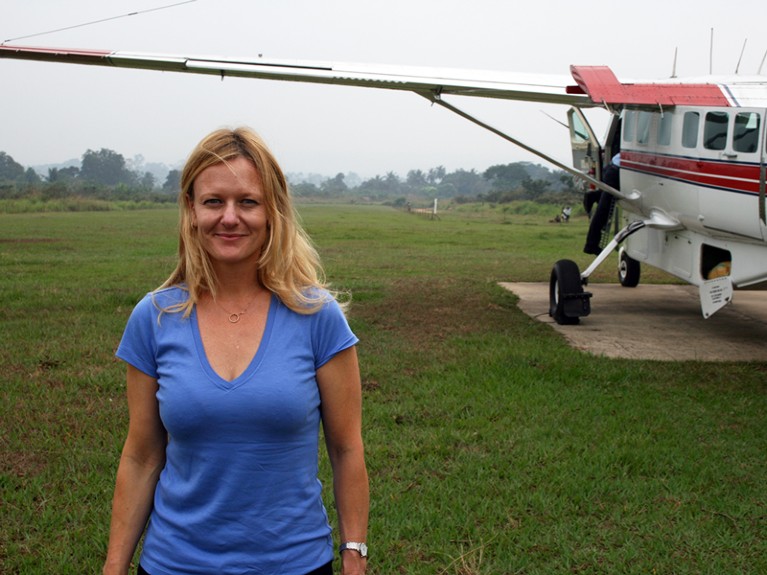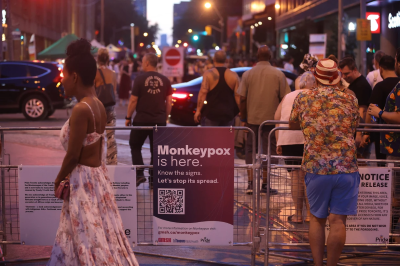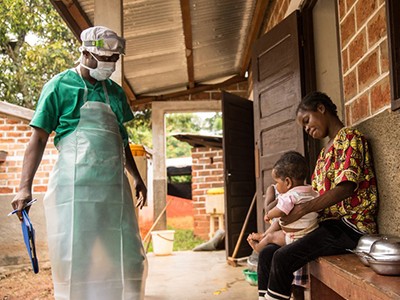In May, when monkeypox began to spread across Europe and beyond, many public-health specialists were taken by surprise. But for researchers who have tracked and studied the viral disease for years in Central and West Africa, the only shock was seeing how accurate their predictions were.
“We had always warned that in favourable circumstances, like what led to this outbreak, the disease could pose a great threat to global health,” says Adesola Yinka-Ogunleye, an epidemiologist at the Nigeria Centre for Disease Control (NCDC) in Abuja, who led the country’s investigation and response to a 2017 monkeypox outbreak.
What does the future look like for monkeypox?
Now, with more than 80,000 confirmed cases in over 100 countries, monkeypox is a stark reminder of what happens when such warnings go unheeded. Scientists such as Yinka-Ogunleye and epidemiologist Anne Rimoin, who has worked on monkeypox outbreaks in the Democratic Republic of the Congo (DRC) since 2002, have amassed decades of experience investigating how the virus spreads. Their fieldwork has helped to inform the global response, and yet much more remains to be uncovered. “There are lots of questions that we need to answer,” says Rimoin, who is based at the University of California, Los Angeles (UCLA).
Nature talked to both researchers to understand how the virus gained its hold in Africa, and what can be done to stem its spread and prevent future global outbreaks of the disease.
Mystery malady
In September 2017, Yinka-Ogunleye and her team travelled to Bayelsa in southern Nigeria to investigate the appearance in people of mysterious skin rashes that were defying treatment. The team suspected that the rashes were due to monkeypox — a virus related to variola, which causes smallpox. But the country hadn’t recorded a case of monkeypox in about 40 years; it was a condition that doctors and medical students at the time had never encountered. On the basis of the symptoms they were seeing, the researchers first had to rule out smallpox.
Testing could not be done in Nigeria, however, and would take several weeks. In the meantime, word of their investigation leaked, and the public started to become alarmed about a potential health crisis. Pressure was mounting for the NCDC team to say something, even without all the facts. So, the scientists decided to go on the radio and discuss their suspicion that monkeypox was the cause. They advised people to come forward if they experienced any symptoms.
The gamble paid off. Not only were they right about monkeypox, their public messaging revealed additional cases in the community. In a year, they identified 122 confirmed and probable cases, and 7 deaths. Nearly 70% of the cases were in men, many of whom were adults, suggesting that immunity conferred by the smallpox vaccine in the 1980s was waning in this group. The team also learnt why monkeypox seemed to suddenly reappear in Nigeria after so long — it turns out the disease had never truly vanished.

Anne Rimoin has studied epidemiology in the Democratic Republic of the Congo for 20 years.Credit: Anne W. Rimoin
“We found at the time that perhaps we missed some cases prior to 2017,” Yinka-Ogunleye says. One of the dermatologists who spoke to the NCDC team described similar cases she had managed, but without ever considering monkeypox as the cause. The team concluded that the virus was probably endemic in Nigeria1.
Yinka-Ogunleye pushed to improve tracking of the disease in humans and identification of possible animal reservoirs. “She did a lot to coordinate the national response. We have learnt a lot from her,” says Odianosen Ehikhamenor, incident manager at the NCDC’s Monkeypox Emergency Operations Centre. Meanwhile, after working in the field for nearly a decade, Yinka-Ogunleye is studying for a doctorate in epidemiology and global health at University College London.
Disease differences
Monkeypox in the DRC has followed a different trajectory from that in Nigeria. The strain circulating in the DRC is descended from a ‘clade’ of the virus that is more deadly than the one in Nigeria and the rest of the world, and the DRC’s health infrastructure is less robust as a result of continuing conflicts. The country has seen thousands of cases of suspected monkeypox and hundreds of deaths from the disease each year since the 1980s. In 2022 so far, the country’s health ministry has reported more than 4,500 suspected and confirmed cases and 155 deaths. Although the DRC lacks sufficient laboratory resources to confirm most cases, Rimoin has been working to change that for the past two decades.
She came to the field by an unexpected route. “I was an African history major,” she says. “My thesis was on the assassination of Patrice Lumumba,” the DRC’s first prime minister. As she learnt more about the country’s culture and politics, she became interested in ways that she could help people there.
After graduating in history, she did a master’s in public health that led to a doctorate in epidemiology at Johns Hopkins Bloomberg School of Public Health in Baltimore, Maryland. From there, she dedicated herself to working on emerging infectious diseases with colleagues in the DRC. Her goal, she says, was to collaborate with and support “these incredible scientists”.
Monkeypox in Africa: the science the world ignored
Since 2002, Rimoin has been actively involved in helping health workers and researchers in the DRC to improve testing, surveillance and research, while assisting officials from other African countries and regions through the UCLA–DRC Health Research and Training programme that she founded. The initiative trains epidemiologists from the United States and the DRC to conduct infectious-disease research in low-resource, logistically complex settings.
“She is a good scientist with great field experience, especially on monkeypox,” says Placide Mbala, head of epidemiology and global health at the National Institute of Biomedical Research in Kinshasa. “Unlike other foreign collaborators,” he says, “she is very open to new ideas and to suggestions.”
When news broke of imported cases of monkeypox in the United Kingdom, Rimoin says she was not surprised. She has often warned that the world is susceptible to this virus, owing to discontinuation of smallpox vaccination programmes. (Unlike smallpox, monkeypox cannot be eradicated because of the existence of animal reservoirs.) She has frequently discussed how the virus could spread beyond Africa2,3.
Silent spread
With monkeypox now considered by the World Health Organization as a global public-health emergency, Yinka-Ogunleye and Rimoin say there has never been a greater need for studies of the disease’s magnitude in Africa. Monkeypox is endemic in at least eight countries, including Benin, Cameroon, Ghana and Liberia, and cases have been reported in these countries and in others across the continent during the current global outbreak.
Yinka-Ogunleye says that studies of seroprevalence — the number of people who have antibodies to the virus — are a key priority for understanding the true extent of the outbreak in Nigeria and throughout Africa. This would reveal the proportion of people who have been exposed, she says.
Yinka-Ogunleye and Rimoin agree on the need for more support for disease surveillance, including laboratory diagnostics. In the DRC, transporting samples from wherever cases occur to a major city such as Kinshasa is difficult, if not impossible.
Rimoin also calls for better resources to help unpick the epidemiology and ecology of the virus in all endemic regions.
“There is still a lot that we need to understand,” she says. This includes how long immunity from previous exposures to monkeypox lasts, risk factors for poor outcomes, the nature of human-to-human transmission and the stability of the virus on surfaces in different settings. Rimoin says that, although there is a way to go, she hopes her network of collaborators and the roll-out of further studies will speed progress. “We hope to get answers,” she says.



